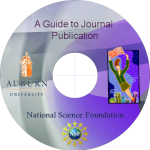

Abstract, Title, Introduction and Conclusion
When deciding on the paper's title consider that it should be short, specific, and appealing. It needs to be descriptive enough so that the paper is selected properly during an online search after publishing, however, it should not be so long as to be burdensome.
When writing the paper's abstract consider:
- Remember the abstract is an independent document and should clearly summarize your efforts in the paper. It should describe the problem or topic that you are addressing in the paper, what you have done to address it, how you accomplished this, the outcomes and why the entire effort is important to publish. The abstract is extremely important as it may be the only part of the paper that many readers read. It should be comprehensive and specific without being detailed. No citations should appear in the abstract.
- Write the abstract after you have completed the entire paper. This allows you to look at the paper in its entirety and clearly identify the main contribution and results.
- Many journals specify keywords after the abstract. These are generally chosen from a list provided by the journal and should number from three to six. Again, choose carefully, as these will influence how the paper comes up during online searches after publishing.
The paper's introduction and conclusion are vital components of the paper and should have the appropriate attention devoted to them. Here are some tips:
- In the introduction and conclusion, include verification on why your research is appealing (i.e. why it should be published). Most referees decide on the fate of the paper, within the first 15 minutes of its reading. If referees have a bad first impression of the paper, they may try to look harder for reasons the paper needs to be rejected. Some readers will skip through the main body of the paper to the conclusion.
- Include citations and statistics in your introduction. Make sure you describe the context of your paper within the greater technical area. Discuss any practical or real aspects of your work (that is, how does it relate to solving problems or describing phenomena that arise outside of the laboratory). The literature section should be thorough but concise. It must be up to date. If you are completing a paper and had done the literature many months prior, make a quick search of the literature appearing since that time. It reflects badly on your command of the area if you miss recent relevant articles and furthermore, an editor will often choose a referee cited in the paper.
- Use published papers from successful writers as benchmarks for getting a good feel for the introduction and conclusion.
- Keep the introduction different from the conclusion. Do not repeat the same comments in both. And, do not copy sentences from the introduction or conclusion to the abstract. All need to be written separately.
- The length of the introduction should not exceed two pages unless you have a particularly long problem statement and / or literature review.
- In your conclusion, discuss how your research could be or should be continued or extended and the limitations to your work (in a positive manner). Do not repeat comments made in the introduction. State the end result of your work. Discuss how your study will affect practitioners, other researchers, and policy makers.
